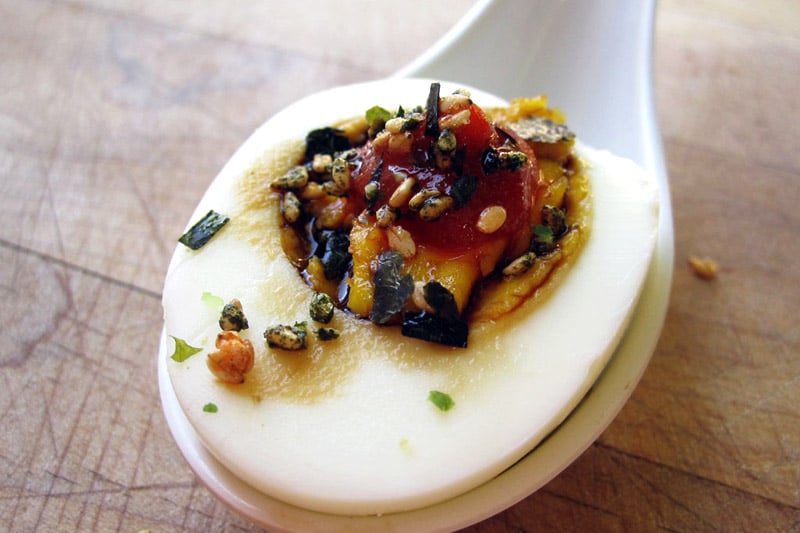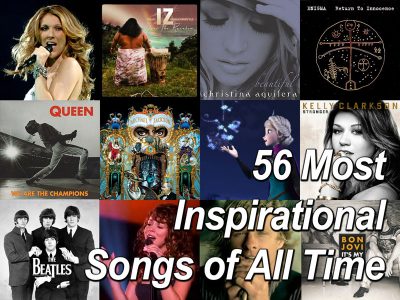This is part 5 of a 6-part series on emotional eating: how I used to be a severe emotional eater, how I overcame my stress eating issues, and how you can stop stress eating, starting today.
- Part 1: How I Overcame Emotional Eating, Part 1: Food as a Symbol of Love
- Part 2: How I Overcame Emotional Eating, Part 2: Deep Entanglement
- Part 3: How I Overcame Emotional Eating, Part 3: Becoming at Peace with Food
- Part 4: 12 Signs of Emotional Eating (And Why It is Bad For You)
- Part 5: How To Stop Emotional Eating, Part 1: Tackling the Causes of Emotional Eating
- Part 6: How To Stop Emotional Eating, Part 2: Rebuilding a Healthy Relationship with Food

(Image)
Do you have a healthy relationship with food? Do you eat in line with your daily needs? Do you eat when and only when it’s needed? Are you able to stop eating when you have met your daily needs?
Or do you have no hold over your eating behavior? Do you find yourself battling back and forth when it comes to food? Do you eat something you don’t find healthy, because you can’t control your eating? Do you use emotionally charged words to describe food, even though food has no feelings for you?
If you answered “yes” to the first set of questions and “no” to the second set, that means you have a highly healthy relationship with food.
On the other hand, if you answered “no” to the first set and “yes” to the second set, that means there’s room for improvement in your relationship with food.
I used to have an intensely twisted relationship with food, due to how I was brought up. I shared this at the start of the series, so if you haven’t, read it here: My Journey With Emotional Eating, Part 1: Food as a Symbol of Love. In Part 4, I shared 12 Signs of Emotional Eating (And Why It is Bad For You), which you would find familiar if you are an emotional eater.
Today’s guide will get you started on removing emotional eating from your life. As this is a long guide, I’ve split it into 2 parts, representing 2 critical parts of the solution. Part 1 will teach you how to tackle the causes of emotional eating. I’ve developed a simple 4-step process to unbuckle emotional eating from your life.
With your (emotional) eating triggers removed, Part 2 will help you to (re)build a healthy relationship with food.
Overcoming emotional eating may not happen overnight, but as long as you keep working on it, you will achieve a 100% healthy relationship with food – sooner than if you put it off to tomorrow.
Read each step in detail and apply what you read. I can only share the methods; you have to be the one to act on them. The power to overcome emotional eating lies in you. Good luck.
How to Stop Emotional Eating, Part 1 – Tackling the Causes of Emotional Eating
Step #1: Identify your emotional eating triggers
If you want to address emotional eating, you need to first know what’s triggering you to eat, even in times of non-hunger.
Let’s do a quick exercise. What were the last few times you felt an urge to eat (outside of hunger), be it whether you gave in to the urge or not? Write them down, now, before you continue reading.
…
…
…
Done?
When I first did this exercise a couple of years back, it was very revealing. Rather than deal with emotional eating like it was some invisible enemy, which was something I did for a long time with little results, it helped me concretize the problem. For the first time, I became conscious of the things that were firing me off to eat. And some of them were interesting, too.
Just to share a partial list of my answers:
- When I felt stressed (usually by work)
- When I made myself do something I didn’t want to do
- When I saw other people eat
- When I received good news
- Whenever I saw food in general or passed by a food stall
- Whenever I saw specific types of food (which then gave rise to food cravings)
- Whenever I was offered food
- When I was in a celebration/occasion/event
- When I returned home
- When it should be time to eat, such as breakfast/lunch/dinner time
- When I went offtrack in my diet by eating something that wasn’t in my ideal diet
- When I came across food which I had never eaten before
- When I felt bored
- When it was night time
- …And many more
Being able to distill my triggers to these situations was the first step in overcoming my emotional eating condition.
In the ideal world, our relationship with food should be one where we eat only when we feel hungry and we stop eating immediately once we are full (vs. eating to finish the plate etc). We do not eat based on any extrinsic factors (such for as a celebration, or stress, work, boredom, to feed a feeling of depression, etc), but based purely on intrinsic factors (i.e. whether we’re hungry or not – which I will share in the next part of the series, Rebuilding a Healthy Relationship with Food).
While knowing the trigger alone wouldn’t stop that trigger, it made me more conscious of what was happening. Rather than reach out for food without awareness (no different than a sleepwalker in life), at least now I knew there was something driving the behavior.
It was important in helping me get a hold of the issue, which up until then had been elusive and shrouded in ambiguity.
Step #2: Understand why you eat under those situations
If you look at the list of triggers you wrote in #1, they might look perfectly normal to you. To (want to) eat when you come across those triggers – what’s wrong with that?
The thing is they may seem normal to you, but that’s only because you’re looking within your reality. It takes no more than comparison with other people, people who have truly healthy relationships with food, to know that your triggers fail to stand after some probing.
Example #1: Eating Cake during Parties

(Image)
For example, at a birthday party. One would think that eating cake is part and parcel of the event. At least I used to. I would always look forward to the cake, and I would try to have more of it if I could. To me, eating the cake was compulsory – it didn’t matter how bursting full I was – I definitely had to have it. And after I ate it, I would feel happy. (though the happiness would be fleeting, as I mentioned in 12 Indicators of Emotional Eating.)
However, I would sometimes meet people who wouldn’t take up the offer to eat the cake. “Why not?” I would ask. “Because I’m not hungry”, was their reply.
While I would think they were missing out at first, it got me thinking later. In my mind, one just had to eat the cake whenever there was cake. Otherwise, the celebration wouldn’t be complete. When I dug into this, I realized it was because I was taught that cake was the essence of every birthday celebration, and it was imperative (not even negotiable) to have the cake.
But was it true though? No, absolutely not. I had meshed up eating and enjoying oneself as the same thing in my mind, but they were 2 separate things. One doesn’t require food to enjoy him/herself – in fact, one shouldn’t need food to enjoy him/herself. If anything, with food out of the picture, one can finally immerse in the situation on an authentic level, since food was just serving as a distraction/filler before.
Example #2: Eating Whenever I Returned Home
Another example would be my past trigger to eat whenever I return home. It was an instantaneous trigger too. Whenever I got back home, I would immediately think about eating – right away – regardless of whether I was hungry or not. I could well have taken an extremely full dinner right before I came home, and the thought to eat would still surface.
When I questioned why, I found out it was because since young, my parents would always buy food for the family when they came back home. My brother and I would then tuck in happily. If I didn’t eat, my parents would nag incessantly (and in a somewhat angry and frustrated tone, too) until I went to the kitchen. “The food would get cold” and “Don’t go hungry – Eat first”, would be their replies.
Hence in my mind, I had linked returning home with eating. If I didn’t eat when I came back home, I would feel incomplete.
But obviously, that wasn’t the case. Returning home was a separate activity from eating. There was no reason for me to eat just because I was back home. I should be eating based on my caloric needs, not anything else! Resolving this helped me unchain the notion of eating from going home.
I could go on and on with multiple examples, but it would be the same thing – whatever trigger it is, it bears no relation to eating, and was only conditioned as such due to how I was brought up.
Probe Into Your Triggers
Now, it’s your turn.
- Refer to your list of triggers from Step #1.
- Pick any trigger from your list, and ask yourself the question: Why do I think of eating when this happens?
- Write down the answers that follow. Usually they are some rhetorical, non-helpful replies, like “Because it’s normal” or “Because that’s the way it’s supposed to be“. Well, we know better. There is always something driving our thoughts.
- Don’t stop there. Challenge your initial answers from #3. Ask again: Why do I think of eating when this happens? After a few tries, you should start getting some new answers.
- Keep asking “Why?” until you reach an answer that is linked to an occurrence from your past, something which fully explains how you came to link eating with that trigger.
Step #3: Detach eating from these triggers
Now that you found the (real) reason why that trigger makes you think of eating, now unchain eating from this trigger.
How do you do that? By:
- Understanding how the link was formed in the first place (i.e. what you did in Step #2). This link was formed because there was a point in your past when you were conditioned to eat during that circumstance, and it’s up to you to identify what that past event(s) were, so you come to full consciousness about it.
- Recognizing this link is incongruent with reality. Look for counteractive evidence that proves this belief is false. Draw comparisons with people who have completely healthy relationships with food (if you know of anyone), and see if this is how they would think/react. If they truly have a 100% healthy relationship with food, they wouldn’t share the same thought.
For more on breaking disempowering beliefs, read:
- How to Create Real Change In Life: Address Root Cause vs. Effects
- Be a Better Me in 30 Days – Day 26: Identify Your Limiting Thoughts
- Be a Better Me in 30 Days – Day 27: Replace With Empowering Thoughts
If you did (a) and (b) correctly, you should eventually realize that thinking you have to eat in the face of trigger X was mere a false belief that existed only in your mind.
In reality, they are two separate things. The only thing that should be linked with eating is if we need to eat (due to physical needs), since that is what food is truly meant for – not anything else. Your emotional eating triggers have no place in your life at all.
Here, I’ll provide 2 examples: First one on how I detached eating from receiving good news; Second one on how I broke an irrational food craving I had in the past (for eggs).
Example #1: Food and Celebration
Before I overcame my emotional eating issue, I would naturally think of eating when I received good news. I would go to the kitchen, reach out for a cookie or a snack, and indulge happily as I rejoiced.
When I questioned why I did that, I found out it was because almost all celebrations I had been in the past took place in the presence of food. For example, after exams (when I was in school), my friends and I would go to McDonald’s, KFC, or Pizza Hut to celebrate. When my parents won lottery, they would take us out for a good meal. When my relatives got married, there would be big feasts, Chinese-style, in lavish restaurants. When it was Chinese New Year, my parents and relatives would stock up the house with an abundance of food to celebrate the festive season. Celebrations would be deemed incomplete if there was no food.
This, along with a thousand other celebratory events in my memory, led celebrations and eating to be synced as 1 common activity in my mind.
Uncovering this made me realize how illogical I was being. All I was doing was taking in more food than my body needed, and usually junk food too, leading to weight gain, after which I would have to exercise more to shed off the calories. It was not a celebration at all – more like a self punishment?! It was a ridiculous way to celebrate.
If I had good news, and I wanted to celebrate, I should be doing so by embracing the news, not via eating, which had nothing to do with the good news to begin with.
With that, I no longer reach out for food today when I receive good news. I simply immerse in the news and feel blissful about it. I also share my positive emotions with friends, so they can experience my joy too. This has allowed me to experience my happy emotions on a deeper level, rather than with eating which had been just an accessory and a distraction, as I concluded in birthday cake example above.
Example #2: Craving for Eggs

(Image)
Random food cravings is a tell-tale sign of emotional eating (Read: 12 Signs of Emotional Eating (And Why It is Bad For You)). I used to have lots of weird food cravings, especially for junk food.
One example of my food cravings was eggs. I would eat them whenever I could (this was before I became vegan).
During my 21-day fast, there were a few days when my mom prepared hard boiled eggs. I remembered feeling a craving when I saw the eggs. They just looked very tempting and I felt I had to eat them. Normally I would just eat them, but since I was doing the fast, I held back. As a result, the craving remained, and it kept popping up when I saw the eggs.
(At this point, fasting critics would argue it was because I was “starving” myself, that I was suffering from exhaustion, and that my body was trying to let know the perils I was in via craving for “nutritious” eggs.)
The thing is, I had read enough to know that this isn’t true. I’ve also found that a lot of times what we think is a physical phenomenon really isn’t, and that it is instead linked to our mind. If we dig deeper, we would find a real explanation that has nothing to do with what one might initially think.
So rather than buy into cop-out rationalizations, I delved deeper.)
Feeling bizarre, I asked myself: “Why am I thinking of eating this?”
My subconsciousness replied: “Because eggs are full of goodness. They make you better.”
I persisted: “Why? Why do I think eggs are good? Why do I have to eat them?”
The next reply blew the mystery wide open. I received the response in the form of a childhood memory.
Since young, my parents would cook hard-boiled eggs during special occasions (like birthdays, religious festivals, Chinese New Year, etc.), and color them with red dye on the shells, a popular Chinese practice. My parents would tell me to eat at least one egg for good fortune.
This was why I always felt I needed to eat eggs whenever I see them, particularly hard boiled ones, particularly the yolk. Eggs were like precious treasures. In my mind, the more eggs I ate, the more good fortune I would have, and the better I would be.
Again, this was a false perception. Eggs are eggs, and good fortune is good fortune. Eggs may be used to convey good fortune, but they are not the same thing. In my mind, I had mashed up the two things as one, when they aren’t.
After I uncovered the root of this belief, my craving for eggs automatically disappeared.
Step #4 (if needed): Resolve the triggers themselves
Sometimes, we turn to food in the face of certain situations because we are unaware of how to deal with them the right way, which led to food/eating coming in as a makeshift solution.
Hence, detaching eating from the trigger isn’t enough – we have to address the trigger directly.
Example #1: Stress Management

(Image)
For example, I was a heavy stress eater in the past. I would eat whenever I felt stress.
In retrospect, it was because I was unaware of how to deal with stress. Stress was the equivalent of being helpless, both of which were completely foreign, unfamiliar emotional states to me. I had always had control in my life, from knowing my vision, to having goals, to achieving my goals. To me, it was completely unacceptable to feel stress or helplessness, because it would suggest weakness.
Hence when faced with stress, I would be like a deer caught in the headlights. My brain would be in a state of total, internal frenzy, like a robot made to execute a command it was not programmed to handle. In an act of desperation, my subconsciousness would trigger me to do what seemed the most intuitive – get rid of the uninviting emotion, and usher in a positive one.
And the best way to do it? Via eating, since I had another concurrent (false) belief that food was love (which I had to separately address). Before I knew it, I would be munching on something, and I would feel the same as before the stressed kicked in – happy, positive, upbeat. It would happen so quickly that I was never aware that I was a stress eater, until I dove into my emotional eating issues this year.
So in addressing this trigger fully, I worked on my stress coping mechanism.
Recognizing Stress is Merely Just Another Emotion
Firstly, I recognized that stress/helplessness is just an emotion, just like any other emotions. There is no need to fear it, nor resist it at all. By resisting it, I would only let it persist.
So a few weeks ago, I decided to face my emotions fully for the first time in my life. Instead of turning to food for salvation after yet another trigger (leading to stress), I decided to acknowledge my emotions. Even if the idea of losing control felt unnerving, I told myself it was okay, and there was no need to be in control.
So I readied myself, and opened my heart so I could feel every bit, every ounce of my emotions. Like how a flood of water would rush in after removing a dam, I could feel panic, anxiety, and even fear washing over me, on top of the original emotion. I felt overwhelmed for a few seconds there.
However, it took no longer than the few seconds before I suddenly felt okay. That despite having these emotions just pass through me, and even coexisting in the same space as me, I was perfectly fine, happy, and at peace, all at the same time. With that, my subconscious desire to eat (to offset the negative emotions) disappeared right away.
Tackling the Issue Head On (vs. Turning to Food)
Secondly, I realized if I was stressed, I should be trying to (a) understand what’s causing the stress (b) break down the stressor and tackle it right away. Not by covering up the stress with food, which was merely a temporary fix. Not by eating then returning to deal with the situation, which was a roundabout solution because I couldn’t handle the feeling of stress in the first place.
So I learned to do just that. Nowadays, if I ever face any situation that triggers unnerving feelings, I would identify the source and tackle it right away. If the situation is too big for me to handle, I will break it down into smaller parts, then deal with it step by step.
Example #2: Dealing with My Diet Slip-ups
Another of my common past triggers would be to eat when I went offtrack in my diet.
For example, I would eat whenever food was offered to me, even if I had no desire to eat it. I would feel bad about it later on, beat myself up over it, then return home and binge on a whole load of crap food after that – when the original “slip” was not even a fraction as bad as I had made it out to be.
If anything, my bingeing was what aggravated the situation, not the initial slip.
The reason why I would do that was because I was angry at myself for compromising when there was no need to. That instead of standing up for myself (in this case, my ideal diet) and saying no when I needed to, I would repress myself to match the situation. Hence, out of (subconscious) anger, I would punish myself, through eating.
In dealing with this, I learned to forgive myself, to take things one step at a time, to be kinder to myself and stop being so self-critical, to take ownership over my meals (as I shared in Part 3: Becoming at Peace with Food), to say no to food, among others. These helped to permanently resolve the issue/trigger.
Address Your Trigger
Look at the trigger in your list, and think over the following:
- Why have you been turning to eating/food in the face of this trigger?
- How are you going to tackle this trigger in the future, when it arises?
Note that this step will be irrelevant for food specific trigger, such as food cravings, since they are the basis for the trigger. But for situational triggers (such as eating when stressed, eating when you feel ugly, eating feeling lonely, etc), it will be highly relevant.
Final Step: Repeat steps #2-4 for all other triggers
Whew! Now that you are done with one trigger, it’s time to repeat the steps for the other triggers.
Depending on how severe your emotional eating situation is, you may have quite a few triggers to work through. Since emotional eating is often a deeply embedded issue, with roots going back to as early as say, childhood, it can take some time to completely weed through all the triggers that’s causing it.
That’s okay though. There’s no rush. Simply work through it slowly, step by step, one step at a time. Every time you get the chance, pick out an emotional trigger to process. In time to come, you’ll suddenly realize there’s suddenly nothing triggering you to eat (outside of hunger). That’s the day when you have broken free from your emotional eating triggers, and about to enter a new, healthy relationship with food.
In working through my emotional eating issue, I had to process a couple dozen emotional triggers, at least – I probably had one of the most twisted relationships with food anyone could ever have, so you’re definitely not alone in your current situation! It took over 8-9 months for me to finally become fully at peace with food, from after my initial 21-day fast (which was a very powerful experience for me, as I had shared in my fasting review and Part 3: Becoming at Peace with Food).
The way to know if you have fully resolved a trigger is to see if you will turn to food when you face the exact same conditions. If you still feel any urge or desire to eat, that means it has not be completely worked through yet. Simply repeat Steps #2-4, especially Step #2, until the urge completely dissipates. You will reach a point when that happens, and you are at neutrality when that trigger occurs.
And do that for all the other triggers, until you no longer feel triggered to eat, except in cases where you truly need to feed yourself (to meet your physical needs). When that happens, you would truly be at a completely neutral relationship with food.
Give yourself a huge, huge pat on the back. Enjoy your brand new, healthy relationship with that which has been immensely perverted in our society today. You have now been truly liberated from the confines of food and eating, and I’m extremely proud of you for that. :D
Next Up
It doesn’t end here though — after you removed the root causes of emotional eating, you don’t want other things to come crashing in and violating your new found relationship with food. Continue on to part 2 of this guide on how to rebuild your relationship with food.
This is part 5 of a 6-part series on emotional eating: how I used to be a severe emotional eater, how I overcame my stress eating issues, and how you can stop stress eating, starting today.
- Part 1: How I Overcame Emotional Eating, Part 1: Food as a Symbol of Love
- Part 2: How I Overcame Emotional Eating, Part 2: Deep Entanglement
- Part 3: How I Overcame Emotional Eating, Part 3: Becoming at Peace with Food
- Part 4: 12 Signs of Emotional Eating (And Why It is Bad For You)
- Part 5: How To Stop Emotional Eating, Part 1: Tackling the Causes of Emotional Eating
- Part 6: How To Stop Emotional Eating, Part 2: Rebuilding a Healthy Relationship with Food






 If you like my articles, join my community of 65,000 readers and get my latest articles delivered to your inbox. Your email is safe. 100% no spam.
If you like my articles, join my community of 65,000 readers and get my latest articles delivered to your inbox. Your email is safe. 100% no spam.
Thanks for this! Another thing I’ve realised is that your thoughts are just thoughts, they don’t exist in reality, therefore if you have a thought to eat unhealthy food, this only exists in reality when you actually are eating the food (for example imagining some biscuits/cookies on a plate – just recognise that it is just imagination). If this doesn’t work, then see that thought as a warning – to start to think why you are having that thought – as Celes describes very well).
Situations that trigger me to eat although I’m not hungry.
1) I came home – I must eat something
when we were coming home when I was a child – we were eating
2) I bough a food I really like eating and it does not require a lot of cooking
I allow myself not to control, I loose the measure. From childhood: it was so tasty I ate it all.
I eat it all to show that it is tasty, for pleasure not for satiety.
3) I opened the fridge to put something back – and the stands some calorie-loaded stuff of my parents
1. I can eat it without prolems
2. I will just try it/have a small piece (not true)
3. I restict myself from eating it
4.I feel deprived of something that others eat
4) I am emotionally tired and depressed
1. I just can’t control
2. I will eat it, enjoy it and purge after
3. then – since I’ll purge – I can also tis and that
4. I like how it tastes
5. sugar makes me feel up
5) I have been undereating earlier in the day
1. I am too hungry
2. My body is stressed with hunger
3. glucose is down – sugar cravings
4. I haven’t beeneating long – now I can compensate for that
6) I am bored and make myself do what I don’t want
1. I am at home and do smth boring amth I don’t want to do + there is some tasty stuff that doesn’t go out of my mind.
I need to address suchroot causes:
1) Stress: it’s Ok, I’m not quitting my stress-generating job, I like it in many ways.
Breaking it in parts:
1) not to take it to personally
2) communicate with coworkers
3) take enogh rest after work
4) remind myself of why I love my work
5) cancell out perfectionism
2) not eating enough during the day:
– starving is not a good way to loos weight for me
– ensuring I get enough nutrients all day long
– sleeping enough
– allowing myself enough time to eat
3) Boredom
– add some new emotions to my life – not through food though
Thank you so much!! I have known myself to be an emotional eater since when I couldnt remember but I just dont know how to address it. Your article is a big help esp for the fact that you dont ask us to pay for anything to be able to read your article. I have long been looking for ways to change my realtionship with food as I know I have used it as my closet friend for so many years. I thought of it as something that gives me unconditional companionship to almost everything I face in life. Now I would want to break free because aside from the fact that it never reciprocates it does a lot of damage to me, like i could almost hear its develish laugh as I tangle more deeper into it.
I just want to say how enlightening this series on emotional eating is. I never realized how integral food has become from a cultural standpoint to almost all emotionally-charged situations and how we just accepted it as a foregone conclusion that eating was a “natural” and required element in these situations. Really fascinating revelation. Thank you!!!
Hey Celes, the post is great! I’m not an emotional eater (as far as I know) so I didn’t do the steps, but those make sense and I’m sure they work. I’ve tweeted it. ;)
Thanks a lot for your support, Amanda! :D Much appreciated.
Commenting for this post is closed.